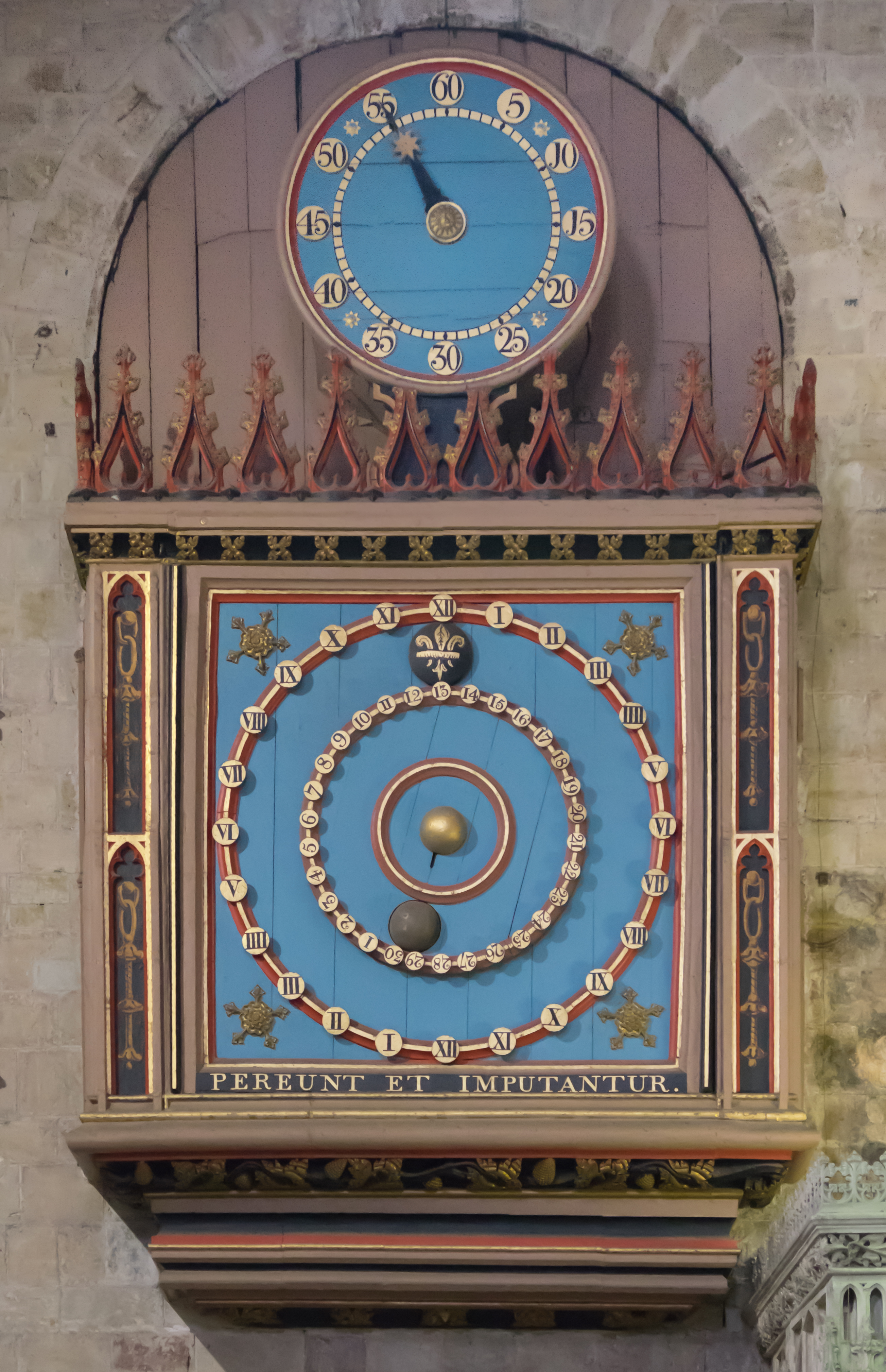
Wikimedia Commons
The Exeter Cathedral astronomical clock, the earliest parts of which date from the 15th century, displays the hour of the day, the day of the lunar month and the phase of the moon. The modern clock mechanism was installed in 1885 by Gillett & Bland of Croydon, and restored in 1910, but the oldest part – the main, lower, dial – dates from 1484. The fleur-de-lys-tipped hand indicates the hour and the position of the sun in the sky on a 24-hour analogue dial. The numbering consists of two sets of Roman numeralsSystem of using letters to represent numbers, an idea that was developed by the Phoenicians two thousand years before the founding of the city of Rome., I to XII. The silver ball and inner dial show the age of the moon and its phase, using a rotating black shield; the upper dial, added in 1760, shows the minutes.[1]
The Latin inscription Pereunt et imputantur at the bottom of the lower dial, a favourite motto for clocks and sundials, comes from the Roman poet Martial. It is usually translated as “they perish and are reckoned to our account”, referring to the hours that we spend, wisely or not.[1]
Hickory Dickory Dock
The door below the clock has a round hole near its base, which legend has it was cut in the early 17th century, to allow entry for the bishop’s cat to deter vermin that were attracted to the animal fat used to lubricate the clock mechanism.[1] That legend has led to the suggestion that the clock is the source of the nursery rhyme Hickory Dickory DockEnglish nursery rhyme the earliest known version of which appears in 1784, probably a counting rhyme.,[2] although that seems more likely to be a counting rhyme.[3] Medieval records do however show that a cat on the cathedral staff was paid one penny a week.[2]
